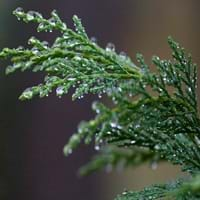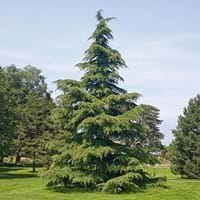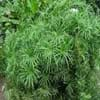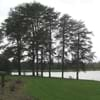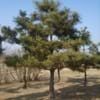Life Span
Perennial
Perennial
Type
Needled or Scaled Evergreen
Needled or Scaled Evergreen
Origin
Hybrid origin
Southern Asia, India, Nepal
Types
not available
Curly Locks, Roman Gold, Emerald Falls Pendula
Number of Varieties
Not Available
Habitat
All sorts of environments, Alpine Meadows, High elevation, Hilly upland habitat
Woodland Garden Canopy
USDA Hardiness Zone
6-9
7-9
Sunset Zone
3b, 4, 5, 6, 7, 8, 9, 10, 11, 12, 13, 14, 15, 16, 17, 18, 19, 20, 21, 22, 23, 24
3a, 3b, 4, 5, 6, 7, 8, 9, 10, 11, 12, 14, 15, 16, 17, 18, 19, 20, 21, 22, 23, 24
Habit
Pyramidal
Pyramidal
Flower Color
Non Flowering Plant
Non Flowering Plant
Flower Color Modifier
Bicolor
Bicolor
Fruit Color
Brown
Brown, Green, Plum
Leaf Color in Spring
Green, Blue Green, Gray Green
Green, Blue Green
Leaf Color in Summer
Green, Blue Green, Gray Green
Green, Blue Green
Leaf Color in Fall
Green, Blue Green, Gray Green
Green, Blue Green
Leaf Color in Winter
Green, Blue Green, Gray Green
Blue Green, Gray Green, Dark Green
Leaf Shape
needle shaped
Needle like
Plant Season
Spring, Summer, Fall, Winter
Spring, Summer, Fall, Winter
Sunlight
Full Sun
Full Sun
Type of Soil
Clay, Loam
Clay, Loam
The pH of Soil
Acidic, Neutral, Alkaline
Neutral, Alkaline
Soil Drainage
Well drained
Average
Bloom Time
All year
Early Spring, Late Spring, Mid Spring
Tolerances
Cold climate, Deer resistant
Drought
Where to Plant?
Ground
Ground
How to Plant?
Hardwood Cuttings, Transplanting
Seedlings
Plant Maintenance
Medium
Medium
Watering Requirements
Average Water Needs
occasional watering once established
In Summer
Lots of watering
Lots of watering
In Spring
Moderate
Moderate
In Winter
Average Water
Average Water
Soil pH
Acidic, Neutral, Alkaline
Neutral, Alkaline
Soil Type
Clay, Loam
Clay, Loam
Soil Drainage Capacity
Well drained
Average
Sun Exposure
Full Sun
Full Sun
Pruning
Prune for size control, Prune if you want to improve plant shape, pruning needed for strong structure, Remove damaged leaves, Remove dead branches, Remove dead leaves
Prune if you want to improve plant shape
Fertilizers
All-Purpose Liquid Fertilizer, slow-release fertilizers
General purpose fertilizer with an NPK ratio 3-1-2
Pests and Diseases
Canker, Root rot, Stigmina needle blight
Free of serious pests and diseases
Plant Tolerance
Cold climate, Deer resistant
Drought
Flower Petal Number
Single
Single
Fragrant Bark/Stem
No
Yes
Foliage Texture
Fine
Fine
Foliage Sheen
Matte
Glossy
Attracts
Birds
Not Available
Allergy
Unknown
no allergic reactions
Aesthetic Uses
Formal Garden, Ornamental use, Showy Purposes, Woodland margins
Showy Purposes
Beauty Benefits
Not Available
Not Available
Environmental Uses
Air purification
Air purification
Medicinal Uses
No Medicinal Use
Antidote, Antifungal, Astringent, Carminative, Diaphoretic, Diuretic, tuberculosis
Part of Plant Used
Not Available
Inner Wood, Outer Bark
Other Uses
Acts as a natural source of rain water for birds and insects., deer resistant, Used as Christmas Tree
Incense, Oil is used for aromatherapy, The essential oil is used as insect repellent, Used as a building material, Wood is used to store meat and food grains
Used As Indoor Plant
No
No
Used As Outdoor Plant
Yes
Yes
Garden Design
Feature Plant, Hedges, Mixed Border, Screening, Wind Break
Feature Plant, Screening, Wind Break, Shade Trees
Botanical Name
X CUPRESSOCYPARIS leylandii
CEDRUS deodara
Common Name
Leylandii
Deodar Cedar, Himalayan Cedar
In Hindi
Leyland cypress
देवदार
In German
Leyland-Zypresse
Deodar Cedar
In French
Cyprès de Leyland
Deodar Cedar
In Spanish
Cupressus leylandii
Deodar Cedar
In Greek
Leyland Cypress
κέδρους Cedar
In Portuguese
Cipreste-de-leyland
Deodar Cedar
In Polish
Cyprysowiec Leylanda
Deodar Cedar
In Latin
Leyland Cypress
Deodar Cedar
Phylum
Coniferophyta
Coniferophyta
Class
Pinopsida
Pinopsida
Family
Cupressaceae
Pinaceae
Clade
Not Available
Not Available
Tribe
Not Available
Not Available
Subfamily
Not Available
Abietoideae
Number of Species
Not Available
Not Available
Importance of Leyland Cypress and Deodar Cedar
Want to have the most appropriate plant for your garden? You might want to know the importance of Leyland Cypress and Deodar Cedar. Basically, these two plants vary in many aspects. Compare Leyland Cypress and Deodar Cedar as they differ in many characteristics such as their life, care, benefits, facts, etc. Every gardener must at least have the slightest clue about the plants he wants to plant in his garden. Compare their benefits, which differ in many ways like facts and uses. The medicinal use of Leyland Cypress is No Medicinal Use whereas of Deodar Cedar is Antidote, Antifungal, Astringent, Carminative, Diaphoretic, Diuretic and tuberculosis. Leyland Cypress has beauty benefits as follows: Not Available while Deodar Cedar has beauty benefits as follows: Not Available.
Compare Facts of Leyland Cypress vs Deodar Cedar
How to choose the best garden plant for your garden depending upon its facts? Here garden plant comparison will help you to solve this query. Compare the facts of Leyland Cypress vs Deodar Cedar and know which one to choose. As garden plants have benefits and other uses, allergy is also a major drawback of plants for some people. Allergic reactions of Leyland Cypress are Unknown whereas of Deodar Cedar have no allergic reactions respectively. Having a fruit bearing plant in your garden can be a plus point of your garden. Leyland Cypress has no showy fruits and Deodar Cedar has showy fruits. Also Leyland Cypress is not flowering and Deodar Cedar is not flowering . You can compare Leyland Cypress and Deodar Cedar facts and facts of other plants too.
